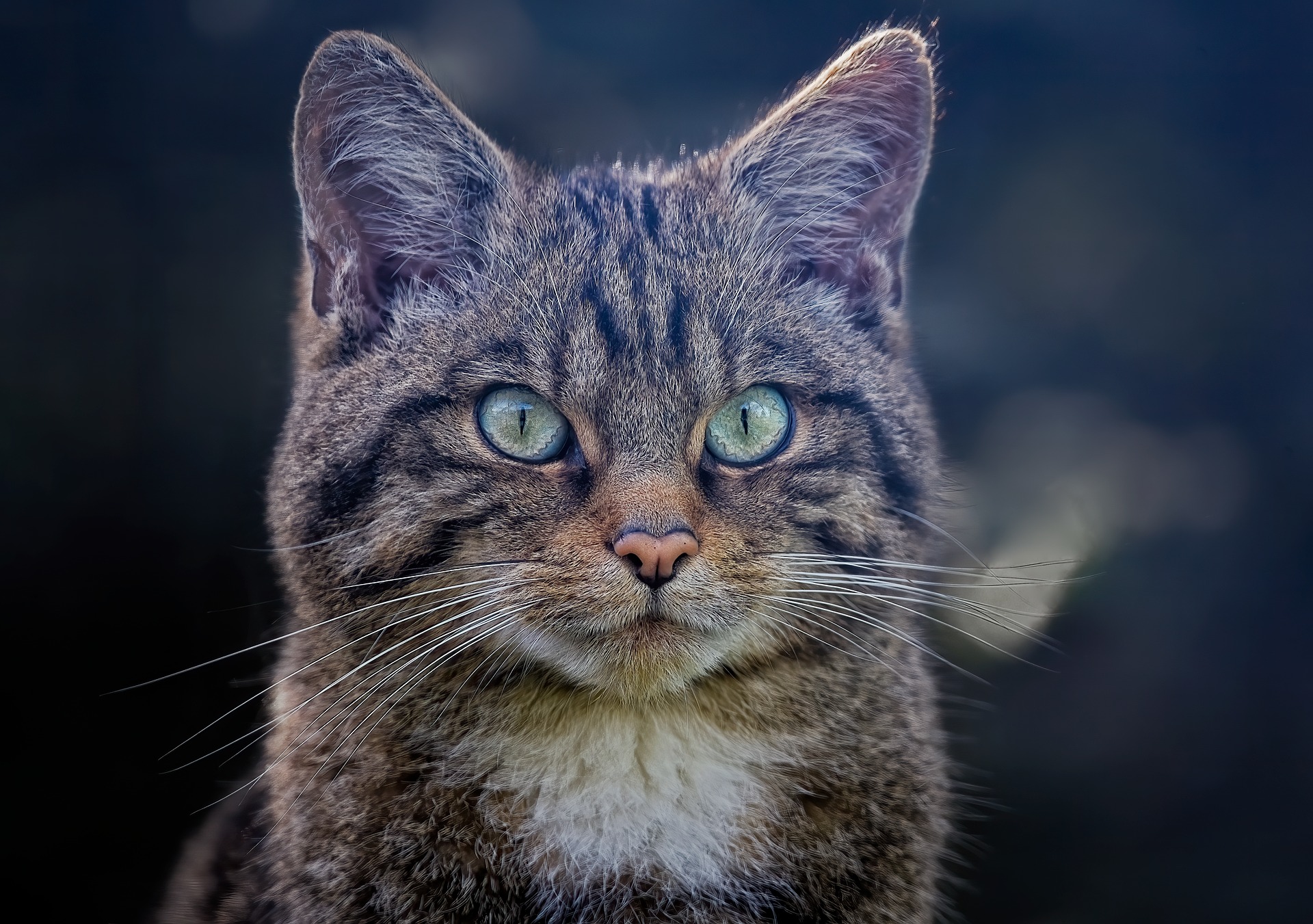Key Characteristics:
- Appearance:
- The Scottish wildcat resembles a domestic tabby cat, but with key differences. It is larger and more robust, with a stocky build and broad head.
- Wildcats have thick fur, usually with distinct dark brown or black stripes on their body, legs, and tail. Unlike domestic cats, their tails are bushier, with a blunt, black tip and well-defined rings.
- Their faces are more pronounced with a shorter, broader nose, and their eyes are a striking green or amber.
- Behavior and Lifestyle:
- Wildcats are solitary, territorial animals, preferring to live and hunt alone. They are crepuscular, meaning they are most active at dawn and dusk.
- They are skilled hunters, preying primarily on small mammals like rabbits, hares, and rodents. They have a keen sense of hearing and vision, which makes them highly efficient predators.
- Wildcat territories vary in size, depending on the availability of food and shelter, and males typically have larger territories that may overlap with those of several females.
- Habitat:
- Scottish wildcats are mainly found in the remote, rugged landscapes of the Scottish Highlands. They inhabit forests, moorlands, and scrublands, where they can find cover for stalking prey and raising their young.
- Historically, wildcats were widespread throughout the British Isles, but today they are mostly confined to the Highlands due to habitat loss and human encroachment.
Threats:
The Scottish wildcat is on the brink of extinction, facing several severe threats:
- Hybridisation: The most critical threat to the species is hybridization with domestic and feral cats. Over time, wildcats have bred with domestic cats, producing hybrids that dilute the wildcat’s genetic purity. This makes it difficult to distinguish true wildcats from hybrids in the wild.
- Habitat Loss: Deforestation, agricultural expansion, and development have reduced the wildcat’s natural habitat, limiting its range and the availability of prey.
- Persecution: Historically, wildcats were persecuted by farmers and gamekeepers who viewed them as pests. While legal protection now exists, some illegal killing still occurs.
- Disease: Wildcats are vulnerable to diseases carried by domestic cats, such as feline leukaemia and feline immunodeficiency virus, further threatening their population.
Conservation Efforts:
Due to its critically endangered status, various conservation initiatives are in place to save the Scottish wildcat:
- Captive Breeding Programs: Several conservation organizations, including Saving Wildcats and the Royal Zoological Society of Scotland, are running captive breeding programs with the goal of releasing pure-bred wildcats back into protected areas in the Highlands.
- Genetic Research: Efforts are underway to study the genetic makeup of wildcats in Scotland, with the aim of distinguishing pure Scottish wildcats from hybrids. This helps identify individuals suitable for breeding and reintroduction.
- Education and Awareness: Public awareness campaigns are helping raise the profile of the wildcat’s plight, encouraging responsible pet ownership to reduce the risk of hybridization and the spread of diseases from domestic cats.
- Protected Areas: Conservationists are working to create and manage protected habitats for wildcats, where they can thrive without the threats posed by human activities.
Future Prospects:
While the Scottish wildcat remains critically endangered, ongoing conservation efforts provide hope for the species’ survival. The success of captive breeding and reintroduction programs, along with habitat restoration, will be crucial in ensuring that the wildcat remains a symbol of the wild Scottish Highlands for future generations.
The Scottish wildcat’s situation is a poignant reminder of the delicate balance between human activity and wildlife, as well as the urgent need for conservation in preserving Scotland’s native species.


